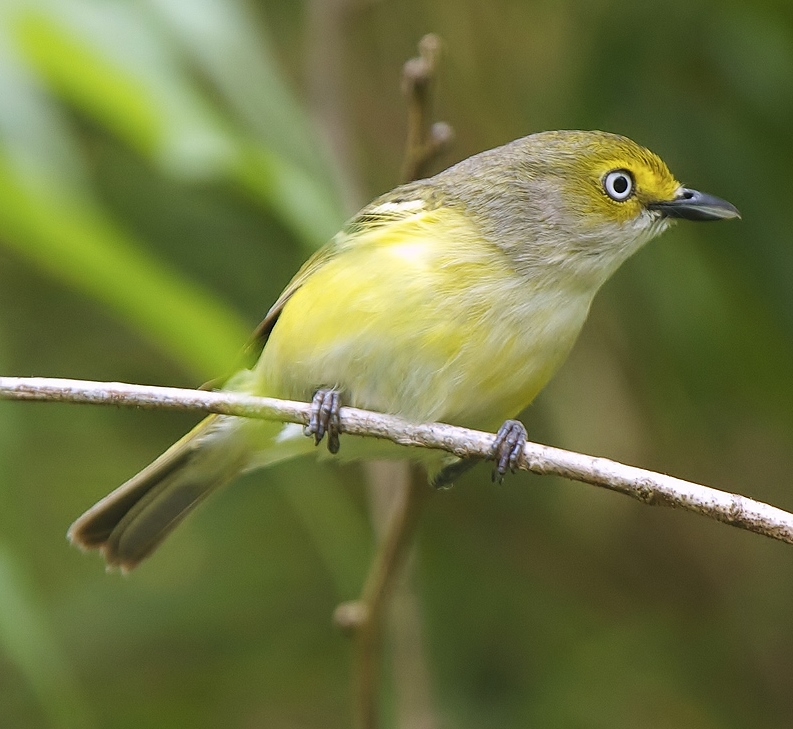 |
| Photo by Steve Patten (Life and Wildlife along the Little Buffalo River) |
Common name:
white-eyed vireo (en); juruviara-d’olho-branco (pt); viréo aux yeux blanc (fr); vireo ojiblanco (es); weißaugenvireo (de)
Taxonomy:
Order Passeriformes
Family Vireonidae
Range:
This species breeds in the eastern United States, from Idaho to Massachusetts and south to Florida and Texas, and also in eastern Mexico. The more southern populations are resident, but the northern ones migrate south to winter in southern Mexico, Guatemala, Honduras and the along the northern Caribbean.
Size:
These birds are 11-13 cm long and have a wingspan of 17-19 cm. They weigh 10-14 g.
Habitat:
The white-eyed vireo is mostly found in dry scrublands and savannas, as well as dense understorey of temperate and tropical forests, generally preferring areas near water. They also use mangroves and pastures and occur from sea level up to an altitude of 1.500 m.
Diet:
They are mostly insectivorous during the breeding season, taking caterpillars, flies, damselflies, mayflies, beetles, cockroaches, stink bugs, leafhoppers, lacewings, bees, ants, wasps, grasshoppers and also spiders. Outside the breeding season they feed on berries and small fruits.
Breeding:
White-eyed vireos breed in April-August. They are mostly monogamous and both sexes help build the nest, an open cup made of leaves, bark, plant fibres, rootlets, or bits of paper, held together with insect silk and spider webs, and decorated on the outside with lichens, moss or leaves. It is lined with rootlets, fine grass or hair, and placed on a fork in a small branch of a tree, usually near the ground. The female lays 3-5 white eggs with a few dark spots, which are incubated by both parents for 13-15 days. The chicks are raised by both parents and fledge 9-11 days after hatching, but only become fully independent 3-4 weeks later.
Conservation:
IUCN status – LC (Least Concern)
This species has a very large breeding range and is described as common to abundant. The population as undergone a small increase over the last 4 decades.







